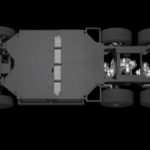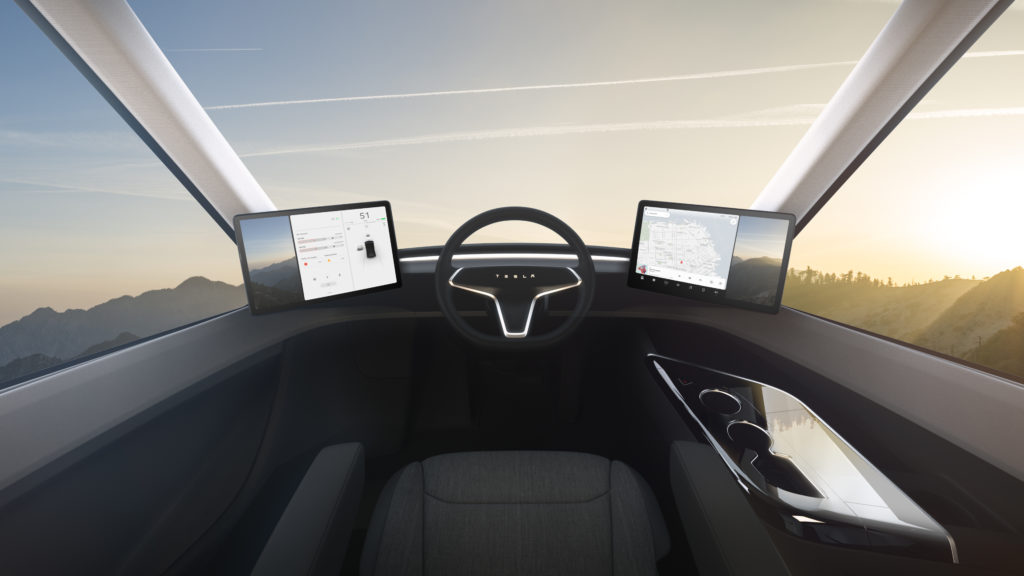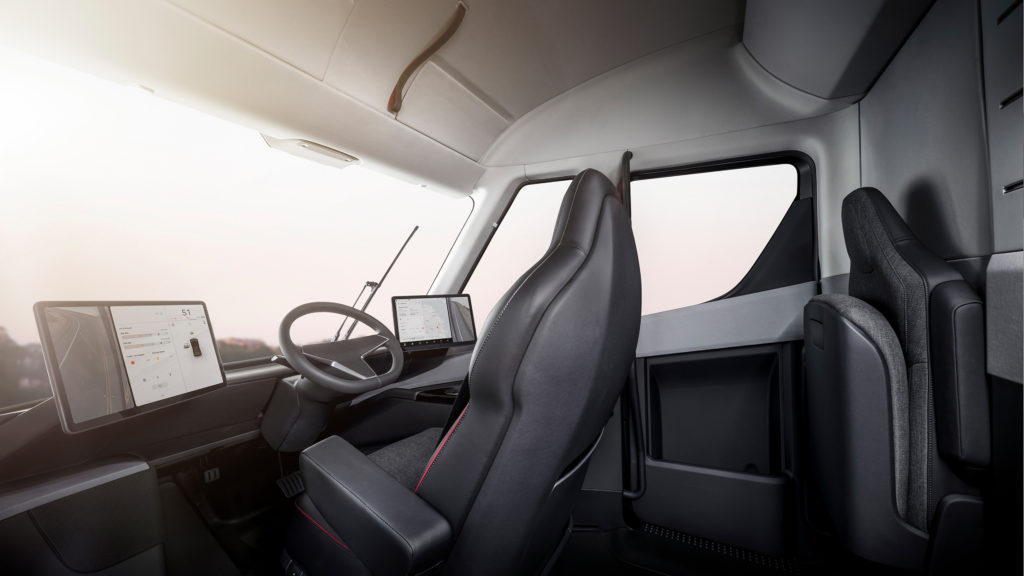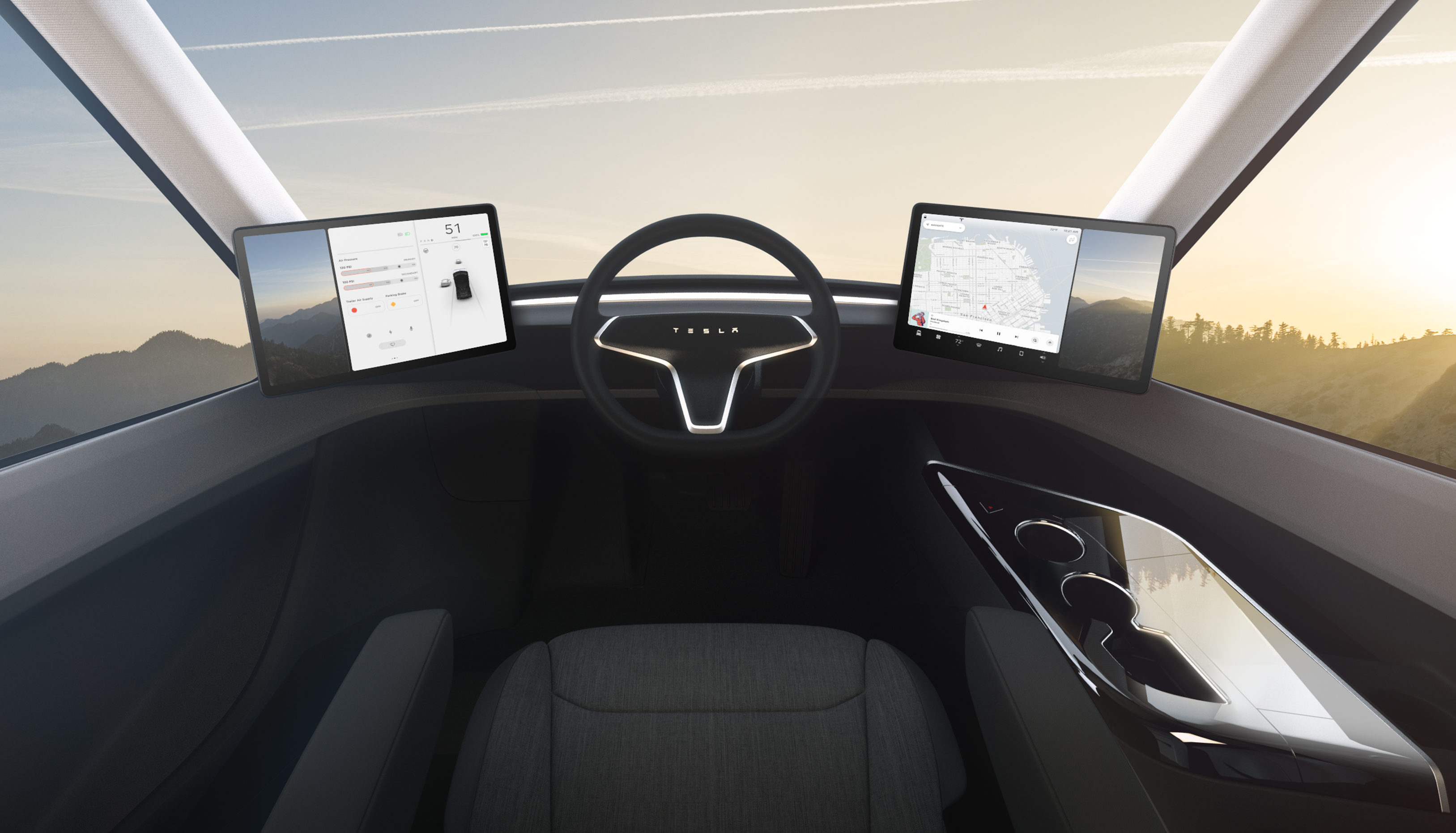

Investor's Corner
How Tesla’s Semi will dramatically alter the trucking industry
The Tesla Semi offers something to the trucking industry that could drastically alter the entire freight moving sector. The trucking industry has seen major changes since it began roughly a century ago and has, despite the assumptions of many outsiders looking in, been one of the more technologically-advanced industries in our nation. Trucks themselves have seen huge changes in the past few decades while the freight industry as a whole has been reinvented and revamped multiple times over in that same time period.
Nasdaq.com contributor Martin Tillier mentions the impacts that the Tesla Semi and others with similar game-changing technologies will have on the trucking industry long-term. Most notably with autonomous trucks and their electric powertrains.
“The technological change that benefits trucking and delivery businesses has been widely reported, but in my experience most people that I ask about it focus on the potential negatives rather than looking for opportunities,” writes Tillier. “..they ignore the biggest beneficiary of all: trucking companies. They are looking at a future where two of their major costs, fuel and drivers, will be dramatically lower..”
Those salient points are much bigger-picture than most commenting on the Tesla Semi and other related vehicles would note. Just about every major manufacturer of commercial vehicles, including Class 8 trucks, is getting in on the electrification game and many are also building towards automation. The companies most often noted, like Tesla and Nikola, are actually side-players compared to the already-established heavy-duty builders like Paccar (Kenworth, Peterbilt), Daimler, Volvo, and the like. Even manufacturers like Cummins are working with alternatives to petroleum-burning drivetrains.
The stakes are huge. According to the American Trucking Associations, over 70 percent of the freight (by tonnage) moved in the United States is moved by truck. There are about ten and a half billion tons of freight moved around the U.S. annually and about 3.6 million Class 8 trucks on the road pulling that freight.
The electrification of trucks is a big step. It won’t happen really quickly, but it will happen eventually. How, exactly, that electrification comes will depend on a lot of things. It could be the battery-powered Tesla Semi or it could be the hydrogen fuel cell-run Toyota-Kenworth collaboration. Or any mixture of things, including the range-extending turbine proposed for the original Nikola design or that of Capstone. Whatever the solution or solutions are, freight-hauling trucks of all sizes are going to become electric. That’s a given.
Why? For the same reason they all went to diesel a few decades ago. It’s more efficient and thus cheaper. Before diesel, most trucks were powered by gasoline and were extremely inefficient, hauling less weight and getting worse fuel economy. Diesel itself saw many changes over time as the engines it powered improved and emissions fell. Currently, trucks use around 38 billion gallons of diesel fuel a year. At four dollars a gallon, that’s about $152 billion in fuel. With electricity, costs could be a fraction of diesel. Roughly a quarter of the cost, in fact, in worst-case assumptions. More optimistic numbers would put it in the 1/16th to 1/8th fractions.
The gains with autonomous self-driving or driving assist technology are even higher. In trucking, the highest cost to the trucking company is the driver behind the wheel, with wages and benefits–not to mention legalities and downtime–having the highest impact on the bottom line. A truck driver can legally drive for 11 hours per day and most drivers average about 600 miles daily. An autonomous truck could drive 24/7, stopping only to load/unload or refuel. Self-driving trucks would also solve a problem that’s long plagued the trucking industry: driver shortages.
Truck drivers will lose jobs, yes. Eventually. Remember, we’re talking decades here, not years. When (not if) automated big trucks take over as the bulk of the industry’s means of moving freight, most drivers will be required to find new careers. We must remember, however, that truck driving is essentially made up of a labor force which has little formal training and mostly on-the-job experience as their primary resume point. These drivers become more skilled with time and hence demand higher wages. The most skilled workers in truck driving tend also be those closest to retirement. Replacements for those skilled drivers are new drivers who’ve completed perhaps three weeks of trucking school and a month of over-the-road training with a slightly more skilled driver as a mentor. This doesn’t make trucking an easy job, but it does mean that those with the most skills are the least likely to lose their jobs when automation becomes the norm.
We can argue until our fingers bleed, typing about the feasibility of the Tesla Semi and Elon Musk’s promises for the truck’s capabilities. Whether Tesla delivers on those promises is moot; as we know that someone, somewhere, and sometime very soon will deliver on similar promises regardless. The trucking industry is going through another sea change. Those in technology, used to a new iPhone every year and who hashtag about cryptocurrencies, might consider a decade or two as a long time to wait. Those in manufacturing and transportation, however, see twenty years as a single generation and their version of 2.0 has huge economic impacts on the nation’s and world’s economies.
The trucking industry knows that electrification and automation are coming. Fast. The Tesla Semi may or may not physically bring that revolution, but it certainly does symbolize it.
Investor's Corner
Tesla could save $2.5B by replacing 10% of staff with Optimus: Morgan Stanley
Jonas assigned each robot a net present value (NPV) of $200,000.
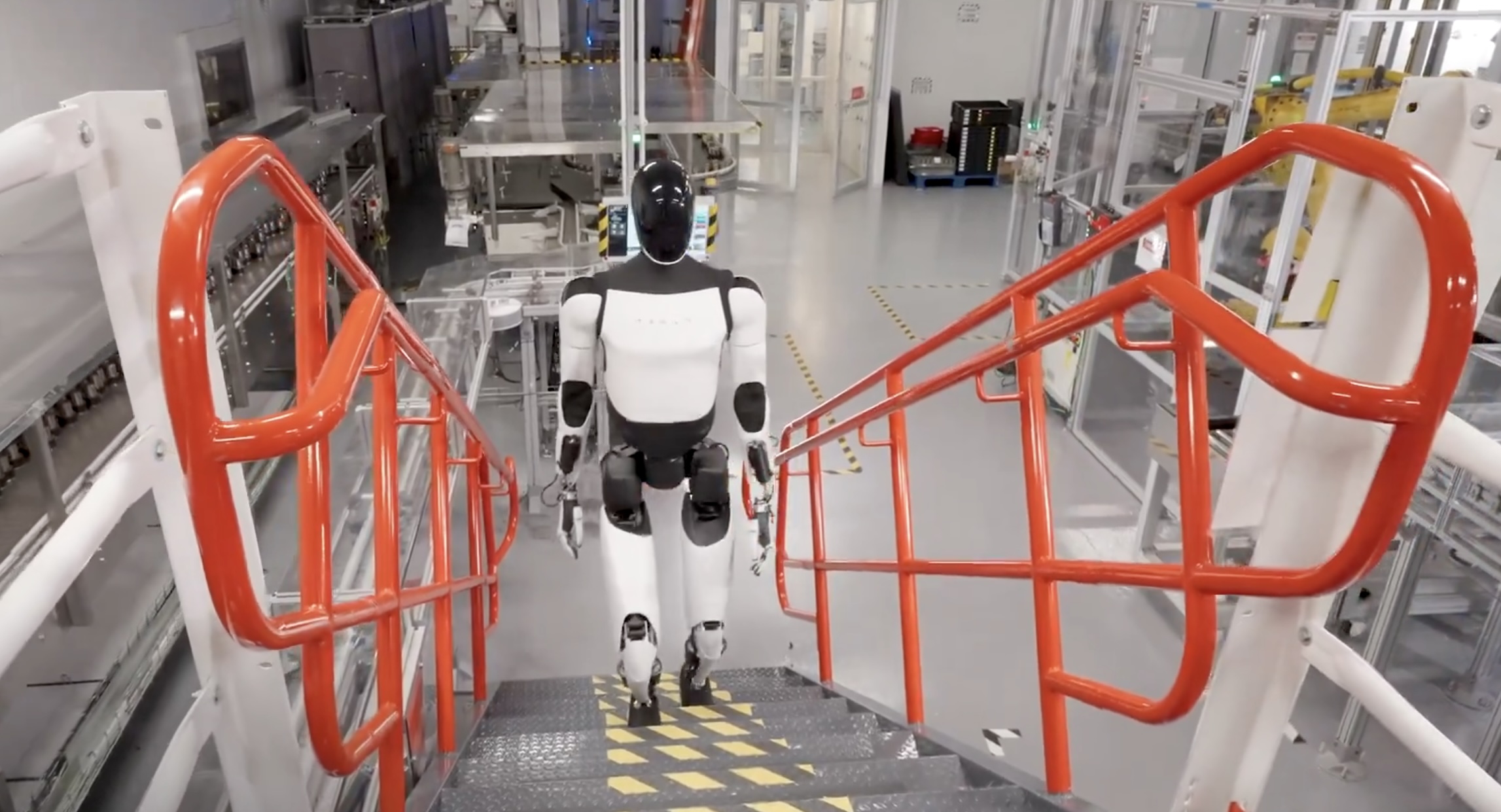
Tesla’s (NASDAQ:TSLA) near-term outlook may be clouded by political controversies and regulatory headwinds, but Morgan Stanley analyst Adam Jonas sees a glimmer of opportunity for the electric vehicle maker.
In a new note, the Morgan Stanley analyst estimated that Tesla could save $2.5 billion by replacing just 10% of its workforce with its Optimus robots, assigning each robot a net present value (NPV) of $200,000.
Morgan Stanley highlights Optimus’ savings potential
Jonas highlighted the potential savings on Tesla’s workforce of 125,665 employees in his note, suggesting that the utilization of Optimus robots could significantly reduce labor costs. The analyst’s note arrived shortly after Tesla reported Q2 2025 deliveries of 384,122 vehicles, which came close to Morgan Stanley’s estimate and slightly under the consensus of 385,086.
“Tesla has 125,665 employees worldwide (year-end 2024). On our calculations, a 10% substitution to humanoid at approximately ($200k NPV/humanoid) could be worth approximately $2.5bn,” Jonas wrote, as noted by Street Insider.
Jonas also issued some caution on Tesla Energy, whose battery storage deployments were flat year over year at 9.6 GWh. Morgan Stanley had expected Tesla Energy to post battery storage deployments of 14 GWh in the second quarter.
Musk’s political ambitions
The backdrop to Jonas’ note included Elon Musk’s involvement in U.S. politics. The Tesla CEO recently floated the idea of launching a new political party, following a poll on X that showed support for the idea. Though a widely circulated FEC filing was labeled false by Musk, the CEO does seem intent on establishing a third political party in the United States.
Jonas cautioned that Musk’s political efforts could divert attention and resources from Tesla’s core operations, adding near-term pressure on TSLA stock. “We believe investors should be prepared for further devotion of resources (financial, time/attention) in the direction of Mr. Musk’s political priorities which may add further near-term pressure to TSLA shares,” Jonas stated.
Investor's Corner
Two Tesla bulls share differing insights on Elon Musk, the Board, and politics
Two noted Tesla bulls have shared differing views on the recent activities of CEO Elon Musk and the company’s leadership.

Two noted Tesla (NASDAQ:TSLA) bulls have shared differing views on the recent activities of CEO Elon Musk and the company’s leadership.
While Wedbush analyst Dan Ives called on Tesla’s board to take concrete steps to ensure Musk remains focused on the EV maker, longtime Tesla supporter Cathie Wood of Ark Invest reaffirmed her confidence in the CEO and the company’s leadership.
Ives warns of distraction risk amid crucial growth phase
In a recent note, Ives stated that Tesla is at a critical point in its history, as the company is transitioning from an EV maker towards an entity that is more focused on autonomous driving and robotics. He then noted that the Board of Directors should “act now” and establish formal boundaries around Musk’s political activities, which could be a headwind on TSLA stock.
Ives laid out a three-point plan that he believes could ensure that the electric vehicle maker is led with proper leadership until the end of the decade. First off, the analyst noted that a new “incentive-driven pay package for Musk as CEO that increases his ownership of Tesla up to ~25% voting power” is necessary. He also stated that the Board should establish clear guidelines for how much time Musk must devote to Tesla operations in order to receive his compensation, and a dedicated oversight committee must be formed to monitor the CEO’s political activities.
Ives, however, highlighted that Tesla should move forward with Musk at its helm. “We urge the Board to act now and move the Tesla story forward with Musk as CEO,” he wrote, reiterating its Outperform rating on Tesla stock and $500 per share price target.
Tesla CEO Elon Musk has responded to Ives’ suggestions with a brief comment on X. “Shut up, Dan,” Musk wrote.
Cathie Wood reiterates trust in Musk and Tesla board
Meanwhile, Ark Investment Management founder Cathie Wood expressed little concern over Musk’s latest controversies. In an interview with Bloomberg Television, Wood said, “We do trust the board and the board’s instincts here and we stay out of politics.” She also noted that Ark has navigated Musk-related headlines since it first invested in Tesla.
Wood also pointed to Musk’s recent move to oversee Tesla’s sales operations in the U.S. and Europe as evidence of his renewed focus in the electric vehicle maker. “When he puts his mind on something, he usually gets the job done,” she said. “So I think he’s much less distracted now than he was, let’s say, in the White House 24/7,” she said.
TSLA stock is down roughly 25% year-to-date but has gained about 19% over the past 12 months, as noted in a StocksTwits report.
Investor's Corner
Cantor Fitzgerald maintains Tesla (TSLA) ‘Overweight’ rating amid Q2 2025 deliveries
Cantor Fitzgerald is holding firm on its bullish stance for the electric vehicle maker.
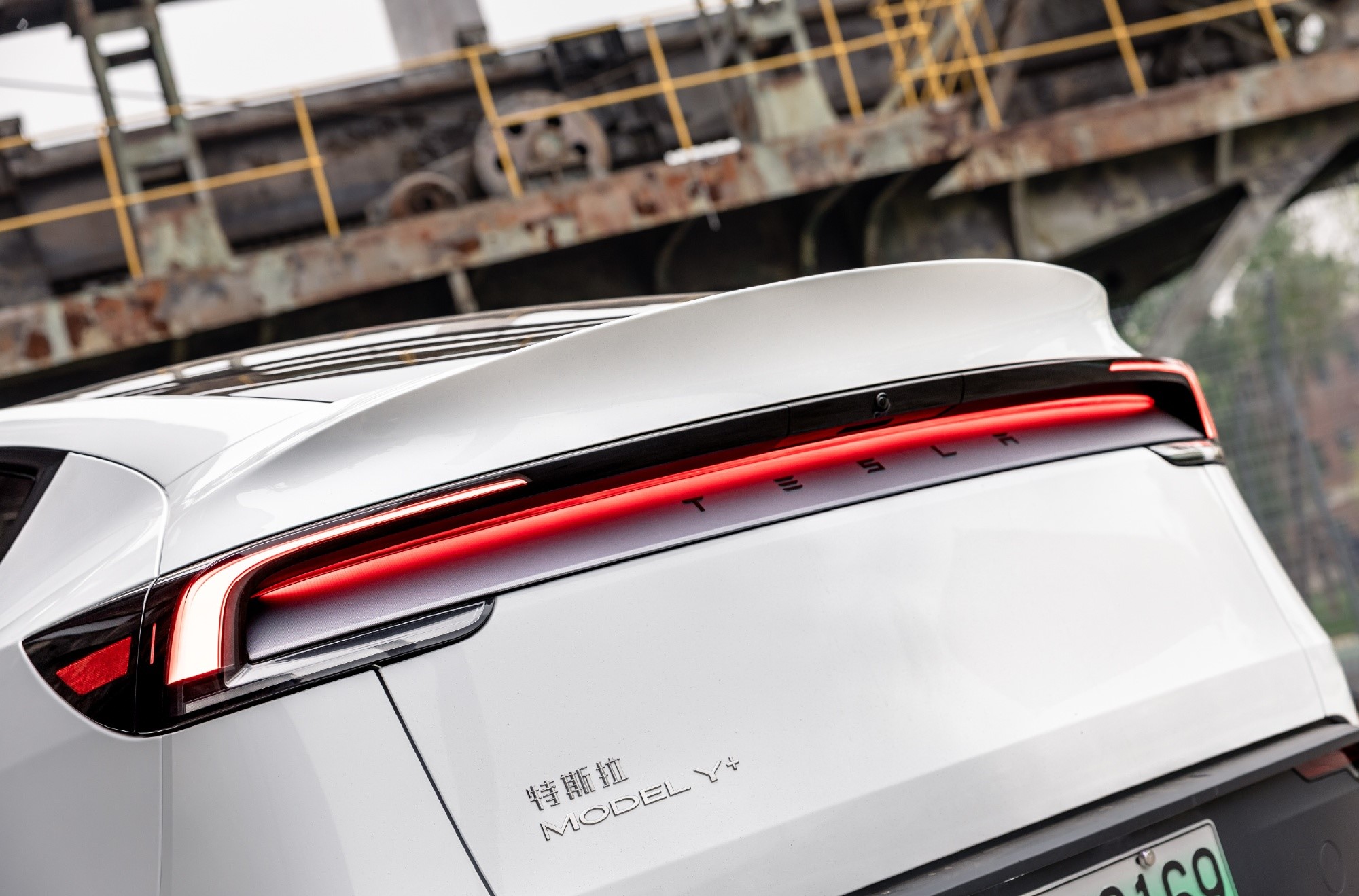
Cantor Fitzgerald is holding firm on its bullish stance for Tesla (NASDAQ: TSLA), reiterating its “Overweight” rating and $355 price target amidst the company’s release of its Q2 2025 vehicle delivery and production report.
Tesla delivered 384,122 vehicles in Q2 2025, falling below last year’s Q2 figure of 443,956 units. Despite softer demand in some countries in Europe and ongoing controversies surrounding CEO Elon Musk, the firm maintained its view that Tesla is a long-term growth story in the EV sector.
Tesla’s Q2 results
Among the 384,122 vehicles that Tesla delivered in the second quarter, 373,728 were Model 3 and Model Y. The remaining 10,394 units were attributed to the Model S, Model X, and Cybertruck. Production was largely flat year-over-year at 410,244 units.
In the energy division, Tesla deployed 9.6 GWh of energy storage in Q2, which was above last year’s 9.4 GWh. Overall, Tesla continues to hold a strong position with $95.7 billion in trailing twelve-month revenue and a 17.7% gross margin, as noted in a report from Investing.com.
Tesla’s stock is still volatile
Tesla’s market cap fell to $941 billion on Monday amid volatility that was likely caused in no small part by CEO Elon Musk’s political posts on X over the weekend. Musk has announced that he is forming the America Party to serve as a third option for voters in the United States, a decision that has earned the ire of U.S. President Donald Trump.
Despite Musk’s controversial nature, some analysts remain bullish on TSLA stock. Apart from Cantor Fitzgerald, Canaccord Genuity also reiterated its “Buy” rating on Tesla shares, with the firm highlighting the company’s positive Q2 vehicle deliveries, which exceeded its expectations by 24,000 units. Cannacord also noted that Tesla remains strong in several markets despite its year-over-year decline in deliveries.
-

 Elon Musk1 day ago
Elon Musk1 day agoWaymo responds to Tesla’s Robotaxi expansion in Austin with bold statement
-

 News1 day ago
News1 day agoTesla exec hints at useful and potentially killer Model Y L feature
-

 Elon Musk2 days ago
Elon Musk2 days agoElon Musk reveals SpaceX’s target for Starship’s 10th launch
-

 Elon Musk3 days ago
Elon Musk3 days agoTesla ups Robotaxi fare price to another comical figure with service area expansion
-

 News1 day ago
News1 day agoTesla’s longer Model Y did not scale back requests for this vehicle type from fans
-

 News1 day ago
News1 day ago“Worthy of respect:” Six-seat Model Y L acknowledged by Tesla China’s biggest rivals
-

 News2 days ago
News2 days agoFirst glimpse of Tesla Model Y with six seats and extended wheelbase
-

 Elon Musk2 days ago
Elon Musk2 days agoElon Musk confirms Tesla is already rolling out a new feature for in-car Grok



